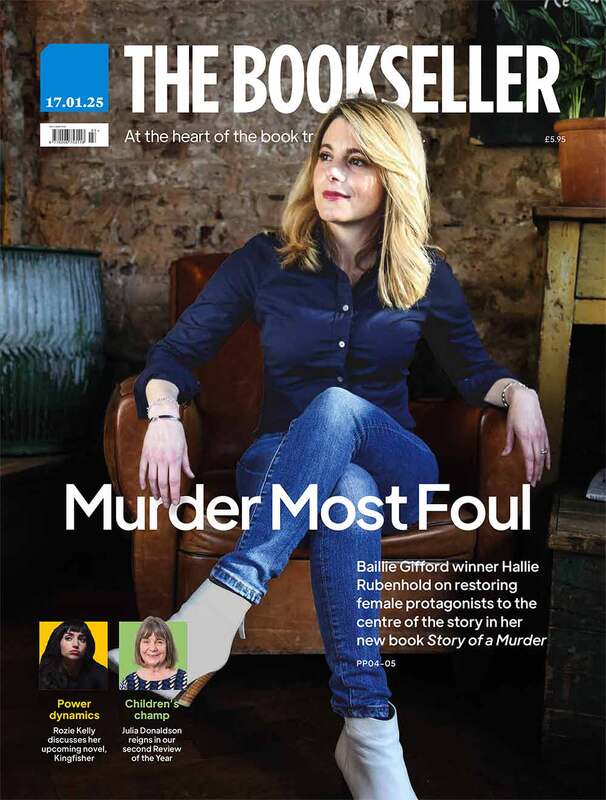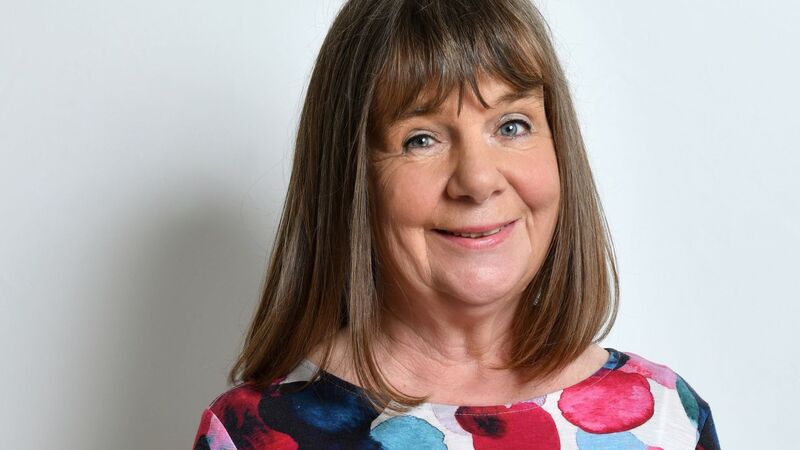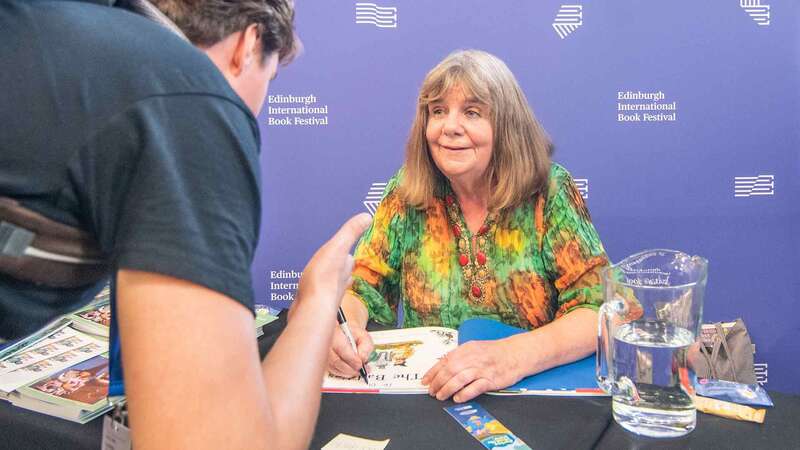You are viewing your 1 free article this month. Login to read more articles.
Review of the Year 2014: Genres
The Children’s sector’s strong performance somewhat disguised print shortfalls elsewhere in the market, with Adult Fiction particularly feeling the squeeze.
If our Review of the Year features were an episodic TV show, this week’s introductory voiceover intoning “previously on Review of the Year . . .” would show scenes of children’s books ruling the roost. Yes, the major theme of 2014 has been the surge of the kids’ sector in print, and this will be driven home in our look at genre performance.
The Children’s sector’s strong performance somewhat disguised print shortfalls elsewhere in the market, with Adult Fiction particularly feeling the squeeze.
If our Review of the Year features were an episodic TV show, this week’s introductory voiceover intoning “previously on Review of the Year . . .” would show scenes of children’s books ruling the roost. Yes, the major theme of 2014 has been the surge of the kids’ sector in print, and this will be driven home in our look at genre performance.
The Children’s category soared in value by 9% year on year, taking £336.5m, thanks to record-breaking performances from Pre-School & Picture Books (£115.3m), Children’s & Young Adult Non-Fiction (£44.5m) and School Textbooks & Study Guides (£41.7m), as well as a robust performance for Children’s and Young Adult Fiction, which took just under £124m (up 10% year on year). Combined, these four sub-genres were worth £29.5m more than they were a year ago, helping the Children’s category outshine Adult Fiction for the first time since records began.
In contrast, £321.3m is a record low for annual Adult Fiction sales in print. General Fiction fell 3%, taking £138.8m; Genre Fiction fell sharply, down 9% to £162m. Crime sales tumbled after two seemingly stabilising years of hovering around the £98m mark; 2014’s £91m is the sub-genre’s lowest yearly total since 2002. In a year dystopia was “in”, courtesy of hit series such as Veronica Roth’s Divergent (HarperCollins, 575,972 copies) and James Dashner’s Maze Runner (Chicken House, 292,437 copies), Science Fiction was definitely “out” (see Fiction panel, right), and with 13 Romance & Saga authors’ value falling by more than £100,000 year on year—including Sylvia Day, who was down £2.1m—print Genre Fiction contracted by £16.5m.
The Non-Fiction: Specialist sector also recorded its lowest annual total on record in 2014. Sales slipped 3% year on year (–£4.8m, to £153.6m) amid a series of contradictions. Nearly 60% of the loss came from Computing & IT, which dropped nearly £3m in a year in which the government altered the National Curriculum to incorporate coding, and made children’s computer literacy a priority. This focus couldn’t, it seems, entice many parents or professionals to read around what is a baffling subject for the uninitiated. The Professional & Programming sub-genre fell by £928,000 alone, despite business leaders citing computer language illiteracy as a threat to the UK economy’s future growth and prosperity.
Down to business
Impressive sales of Thomas Piketty’s Capital in the Twenty-First Century (Belknap, 39,508 copies) and Michael Lewis’ Flash Boys (Allen Lane, 33,323 copies), worth £1.5m combined, obscure widespread declines across Business sub-genres. Nielsen’s Management, Business, Economics & Industry genre fell by 1% (to £32.6m) but Accounting & Business Textbooks, Management, Finance, Economics Study Guides and Sales & Marketing combined to generate £26.4m, a year-on-year shortfall of £1.4m—even though the economy is supposed to be getting stronger.
Non-Fiction: Trade, BookScan’s largest category, did not have its lowest year on record, but it was down 4% to £585.7m, slipping under the £600m mark for the first time since 2001.
Although print sales for Adult Fiction and Non-Fiction struggled in the wake of Children’s sales boom, some of the genres’ biggest hits last year were about hardships endured by young people. Following intense scrutiny of high-profile child abuse scandals in recent years, memoirs written by care workers, detailing harrowing cases they encountered over their professional lives, proved enormously popular. More than 15 of these could be found among the top 300 autobiographies last year, including Cathy Glass’ The Child Bride (HC, 40,057 copies) and Casey Watson’s The Girl Without a Voice (HarperElement, 25,034 copies), as well as three notable recollections by adults who lived in care homes: Hope Daniels sold 28,000 copies of Hackney Child (S&S) in paperback, Marni Mulholland’s Raw sold 17,677 units, and an additional 18,000 sales came from Social Sciences’ 2013 bestseller, Girl A (both Ebury).
The gritty subject matter of these accounts has been mirrored in Fiction, most recently in Mandasue Heller’s Afraid (Hodder), which has sold 3,700 hardback copies in four weeks on sale.
Parents’ concerns about children’s safety, the inability to protect kids in the social media age, or simply causing them harm inadvertantly has been articulated in some of Fiction’s biggest hits last year, including Jane Shemilt’s Daughter (Penguin, 139,350 copies), C L Taylor’s The Accident (AVON, 35,531 copies) and Paula Daly’s Just What Kind of Mother Are You? (Corgi, 32,868 copies), all débuts.
Fictional accounts of devastating childhood loss (in myriad forms) was also a major trend: John Green’s The Fault in Our Stars (Penguin 871,815 copies), Donna Tartt’s The Goldfinch (Abacus, 267,107 units), Khaled Hosseini’s And the Mountains Echoed (Bloomsbury, 235,146 copies), Nathan Filer’s Costa winner The Shock of the Fall (Borough Press, 199,122 copies) and Karen Joy Fowler’s We are All Completely Beside Ourselves (Serpent’s Tail, 168,775 copies), all of which were among Fiction’s top 20 titles in 2014.
Fiction
Fiction’s top-line figures (below) overshadow a remarkable performance for Graphic Novels, which grew in value by 14% year on year (to £20.3m), and was more valuable to the TCM in 2014 than Sport (£19.5m). In a year when four film adaptations based on comic-book superheores (“Guardians of the Galaxy”, “X-Men”, “Captain America” and “Spider-Man”) were among the 10 top-grossing films worldwide, Graphic Novels enjoyed its best print year on record. The Superhero sub-genre grew by 21.5% year on year, passing £7m for the first time. It seems apt that its bestseller, Civil War (Panini, 12,530 copies), is seven years old. The Manga sub-genre was also up—by £891,000 to £4.4m, a higher annual total than Horror (£4.2m). General Graphic Novels took £8.4m, up 2.6% year on year.
Short Stories & Fiction also had a solid year, taking £4.1m, its highest yearly total since 2010, its peak year. Sales were lifted by Hilary Mantel’s The Assassination of Margaret Thatcher (HarperCollins, 40,169 units for a value of £473,715), but 10 titles sold 5,000 copies or more, compared to seven in 2013.
Removing the skewing influence of Dan Brown’s Inferno (Corgi), Crime’s sales would have declined year on year by 3%, which would equate to a £2.7m loss. Last year’s top seller was Gillian Flynn’s Gone Girl (Pheonix), selling 529,602 copies.
The value of Fiction hardbacks fell 10% last year to £67.9m (–2% if Inferno’s sales are ignored) with just three crossing the 100,000-copy barrier, compared to seven in 2013. Paperback sales also fell, by 4% to £253.4m, from 44.8 million units. Average selling prices for hardbacks and paperbacks continue to rise year on year; both were up by 20p, to £11.45 and £5.66 respectively.
Non-fiction
Trade Non-Fiction sales fell by £24.4m year on year, with the biggest losses concentrated in two genres: Food & Drink, down 11% (–£8.9m) year on year to £72m; and Biographies & Autobiographies, down 7% to £86m (–£6.5m on 2013). There was much media commentary towards the end of the year about the apparent lack of interest in some of the season’s biggest memoirs. Perhaps pundits were expecting a bit more from titles such as We Need to Talk About . . .Kevin Bridges (Michael Joseph, 53,723 hardback copies), but Biographies shouldn’t be written off just yet. Ignore Sir Alex Ferguson’s sales across 2013 and 2014, and the genre was up by 3% year on year, taking more than £85m. In fact, eight titles (versus seven in 2013) sold 100,000 copies or more, and 23 sold more than 50,000, compared with 20 in 2013.
There were also some promising performances for booksellers to build on in 2015. Religion was worth nearly £1m more annually in 2014, taking £16.9m—its best performance this decade. The Mind, Body & Spirit genre also grew; after a record low in 2013 (£8.8m), sales were up 8%, to £9.5m. Mindfulness books took more than £500,000. Driven by growth in sub-genres Pets & Equine (+19% to £4m) and Hobbies (+17% to £2.6m), the Leisure & Lifestyle genre was up for a second consecutive year, taking £31.6m. An outstanding performance for Poetry (+7.4% to £8.5m), led by its top seller Carol Ann Duffy, guided parent genre Literature, Poetry & Criticism to a third year of growth in a row, up by 5% to a value of £23.4m in 2014.
The Specialist sector had its worst year on record, but 85% of the £4.8m year-on-year decline came from Computing & IT and Social Sciences.
Children's
Children’s remarkable performance demonstrates once again the power of brands. Sales were up by £28.1m on 2013, but books about Minecraft singularly accounted for more than £10m, lifting Children’s Young Adult Non-Fiction to a record £44.5m (+36% year on year). “Disney” titles were worth £7.8m, (+43%) based on TCM Top 5,000 data for the category, and just two authors’ annual totals—Julia Donaldson’s £12.7m and David Walliams’ £9.2m—accounted for 6.5% of Children’s entire revenue in 2014.
Big film adaptations helped too, with the first instalments of the Divergent and The Maze Runner series contributing a combined £2.1m. But with so much success tied to numerous “of the moment” brands, Children’s incredible £336.5m haul in 2014 may well be hard to top in 2015.
Not all Children’s genres grew, however. Children’s Annuals fell for a fifth year in a row, to £9.5m, down 16% year on year.
Pre-School & Picture Books’ £115.3m (+3.6%) is a record for the genre, but the growth came from the extra £4.9m Picture Books earned last year (+10%, to £54.9m), which disguised Pre-School & Early Learning’s lowest yearly figure to date: £14m, down 4% (–£640,000) on 2013. Novelty & Activity Books were also down, worth £300,000 less in 2014, taking £46.4m (–0.7%).
Children’s General Non-Fiction sales were fantastic, however, with sales growing for a sixth consecutive year. A total of £10.3m was spent on titles in the sub-genre, £1.4m more than in 2013. Dr Miranda MacQuitty’s guide to The Natural History Museum sold 96,709 copies at virtually full price, earning £483,405. School Textbooks & Study Guides was also robust: the Maths and Literature sub-genres both had record years, taking £35.3 combined.
Children's general literature and leisure
A few Children’s categories had record years in 2014, but none so spectacularly as Children’s General Interest & Leisure (GI&L). The category zoomed 93.8% year on year to £21.3m, a total which is a whopping 57.8% up on its previous high-water mark, 2009’s £13.5m.
Minecraft was the driver. Egmont’s official tie-ins to the wildly popular video game accounted for 38% of the entire sub-genre’s output. It was not all Minecraft, however, as several other crazes sweeping through the playgrounds boosted sales in the category. The seemingly ubiquitous loom bands sparked a flurry of publishing: 10 different books on the subject (published by Simon & Schuster Children’s Books) charted on the TCM last year, earning the publisher a tidy £1m.
It is decent odds that children “looming” were doing so while incessantly singing songs from Disney’s “Frozen”. Tie-ins to the hugely popular film earned £4m last year in a variety of BookScan categories, with all editions of Disney Frozen Essential Guide (DK) leading the charge in GI&L.
DK also had 10 LEGO properties generate more than £50,000 through GI&L, led by The LEGO Movie Essential Guide (£161,000)
and The LEGO Official Movie Handbook (£88,000).
Young adult
Of the top 10 Young Adult Fiction titles last year, all but one directly or indirectly benefited from a film adaptation, the exception being the category’s top-seller, Zoe Sugg’s Girl Online (Penguin). “Zoella”, of course, hails from the world of YouTube and her legion of fans enabled her to score the biggest first-week sale for a début novel since BookScan records began (78,109 copies).
All three books in Veronica Roth’s Hunger Games-lite series Divergent (HCCB) appear, helped by the film that was released in the spring, while autumn’s “The Maze Runner” propelled James Dashner’s source books up the charts. Markus Zusak’s sales soared a massive 313% (to £1.2m) last year, thanks to The Book Thief film tie-in. Adaptations of John Green’s backlist have not hit our screens yet—both Looking for Alaska (HC) and Paper Towns (Bloomsbury) are in the pipeline—but his list was helped profoundly by “The Fault In Our Stars” film. Strip out 2014’s top seller Fault . . . (classified as Adult) and Green’s YA output (£3.3m) rose 135% year on year.
Overall, YA grew 21% to £33m in 2014. This may not come close to the Twilight-led heights of 2009 (£51.9m) and 2010 (£49.2m), but it is the category’s fourth-best result since records began.
Popular science
Popular Science was the only Trade Non-Fiction category with sales in eight figures to have a double-digit percentage rise, with its TCM revenue jumping 15.7% to £10.9m, the sector’s best result in four years.
Non-fiction brand-in-the-making Chris Hadfield displaced hunky science guy Brian Cox, who (with co-writers Andrew Cohen and Jeff Forshaw) had the number one Popular Science title for four consecutive years. Released at the tail-end of 2014, former astronaut Hadfield’s book of photographs from the International Space Station, You Are Here (Macmillan), impressively took almost £870,000 in just four weeks.
Profile certainly punches above its weight here. The indie publisher has an impressive three spots in the top 10: surgeon Atul Gawande’s look at ageing and dying, Being Mortal; and two titles from its long-standing collaboration with New Scientist—Question Everything and Nothing: From Absolute Zero to Cosmic Oblivion.
In third place, NASA robiticist turned cult webcomic author Randall Munroe’s What If? (John Murray) is a series of serious scientific answers to some not-so-serious questions posed to him on his xckd.com site, such as: “How many humans would a T-Rex rampaging through New York need to eat a day?”
Picture books
Having been the UK’s bestselling author for two years on the trot, it should come as no surprise that Julia Donaldson rules BookScan’s Picture Book category. With £9.4m of her 2014 TCM sales coming from Picture Books, Donaldson was responsible for 17% of the category’s entire revenue last year, with six of the top 10 books in the genre, and 24 of the top 50. Overall, Picture Books rose a remarkable 9.9% to £54.9m, the category’s biggest total since BookScan records began in 1998.
Interestingly, little at the top of Picture Books is frontlist. Donaldson’s Scarecrows’ Wedding (Alison Green, illus. Axel Scheffler) was published in July 2014 but, excluding licensed character titles, it is one of only four books originally published last year to appear in the Picture Book top 50. Indeed, with Judith Kerr’s The Tiger Who Came to Tea (HarperCollins Children’s Books, originally published in 1968), Eric Carle’s The Very Hungry Caterpillar (Puffin, 1969) and Rod Campbell’s Dear Zoo (Macmillan Children’s, 1982) all in the top 10, one could argue that Picture Book backlist is frontlist.
A licensed property breakout last year was Disney’s “Frozen”, with £1.4m worth of Picture Book sales, led by Frozen: My Busy Book (Phidal, £419,000).
Biographies and memoirs
Last year was not a good one for life writing, in fact it was the worst. With a 7% decline (to £86.1m), BookScan’s overall Autobiography & Biography category had its lowest total since records began. The category has declined every year since its high watermark in 2006 (£146.2m), resulting in a drop of 41% in the past eight years.
Major sub-categories Autobiography: The Arts (–7.6% to £21.1m) and Autobiography: Sport (–20.8% to £16.3m) had significant slumps, though Sport was affected by Sir Alex Ferguson’s record year in 2013.
Autobiography: Business, however, had a 150% boost, almost entirely due to Martin Scorsese’s adaptation of The Wolf of Wall Street (Two Roads). Across editions, Jordan Belfort’s book accounted for 62p of every £1 spent on Business memoirs.
It was a strong year for Biography (+29.5% to £9.4m) and Autobiography (+40.5% to £6.1m) in Historical, Political & Military. Boris Johnson’s The Churchill Factor (Hodder) generated 30% of the History Biography revenue. Memoir was led by Eric Lomax’s film-boosted The Railway Man (Vintage, 135,000 units), while former home secretary Alan Johnson’s two Transworld-published memoirs combined to earn £1.1m.
Arts and illustrated
The top 10 titles in BookScan’s The Arts category show how important blockbuster exhibitions are in shifting illustrated titles. Four of the top 10 are companion volumes to shows at London museums, three of which were held at the Tate Modern. More than 560,000 people visited Henri Matisse: The Cut Outs last year—the biggest show in the Tate’s 117-year history—while Kazimir Malevich and Paul Klee exhibits were both hits in the first half of 2014.
British Museum director Neil MacGregor’s Germany . . .(Allen Lane) benefited from an autumn exhibition at his museum and a BBC Radio 4 serial, too. The station also had a hand in Grayson Perry’s Playing to the Gallery (Particular): the essays from the Turner Prize-winner prescribing methods for democratising art were based partly on his Radio 4 Reith Lectures.
It was not all so highbrow. The World According to Gogglebox (Canongate) tapped into the wildly popular “watching people watch TV” Channel 4 show; it was the bestseller by volume in BookScan’s The Arts category (49,736 copies) by almost 10,000 units.
Overall, The Arts earned £64.4m in 2014, a marginal (0.1%) gain on 2013. Owing to the exhibition tie-ins, Art Monographs were up 21%, to £5.9m.
General and literary fiction
There is a suggestion that print sales of Fiction: General & Literary (F:G&L) are reaching a sort of digital-age base level. After horrific year-on-year drops in 2011 (–26%) and 2012 (–19%)—when fiction e-book sales were surging—in 2013 there was a less precipitous drop (–6.4%), and in 2014 F:G&L dipped an even shallower 3.5%, to £134.7m.
This is hardly time for ecstatic celebrations—£134.7m is the category’s worst performance since records began. Yet the top titles suggest a certain type of book is becoming stronger in print: the reading group pick/prize-winning tome. A Waterstones-type title, if you will. Indeed, the retailer is partially responsible for the success of Jessie Burton’s The Miniaturist (Picador), after the chain named the début as its Book of the Year.
Eleven F:G&L titles earned more than £1m through BookScan last year—the 10 titles in the chart (below left) and Jonas Jonasson’s The Hundred-Year-Old Man . . .(Hesperus)—the most TCM millionaires in the category since 2011 (when there was 16). Outside the top 10, there were excellent returns for Jonasson’s The Girl Who Saved the King of Sweden (Fourth Estate, £938,000) and Karen Joy Fowler’s Booker-shortlistee We Are All Completely Beside Ourselves (Serpent’s Tail, £932,000).
Crime fiction
At £90.9m, BookScan’s Crime, Thriller & Adventure (CT&A) category had its worst year through the TCM in 12 years. This is, of course, part of the ongoing migration to digital which has been much discussed in this organ, yet it underscores the sector’s declining influence in shops. Last year, 17 crime titles took more than £500,000, the lowest number to reach the half a million mark in a calendar year through the TCM since records began. Compare this to 2010, when CT&A churned out £154.4m in print sales, and 39 books earned more than £500,000.
Chart-topper Gillian Flynn’s Gone Girl (Phoenix) was helped by David Fincher’s film adaptation; the novel has generated more than £6.5m since its release in 2012.
An author who has not slowed in print is C J Sansom. Every hardback in his Shardlake series has outsold the previous outing by at least 20%, with Lamentation (Mantle) the best yet, shifting 135,000 copies in nine weeks on sale in 2014, a 65% rise in hardback volume over a similar period compared to the previous novel, 2010’s Heartstone (Mantle).
Backlist has worked for James Patterson. He had no book in the CT&A top 10, but he had an impressive 21 different titles earn more than £100,000.









